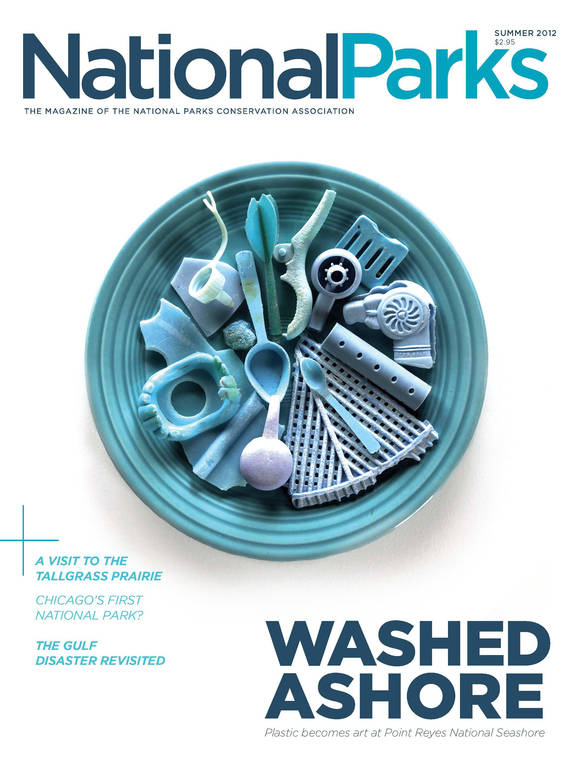Summer 2012
Slip Sliding Away?
Hydraulic fracturing could endanger the American eel and harm the longest undammed river on the Eastern Seaboard.
As a young boy living near Port Jervis, New York, Joseph Dembeck often fished for eels at dusk, by the light of a lantern. This was long before he became a marine biologist and learned all about their status as a keystone species, integral to maintaining the health of the Delaware River. Small ones or “shoestrings,” he tossed back. But bigger ones, fat females, about 18 to 24 inches long and probably 15 to 20 years old, he’d keep. “We’d skin them, cut them into four-inch sections, put some Lawry’s spice on them, and grill them and eat them like corn on the cob,” he says.
Dembeck’s boyhood on the upper Delaware and his love of the outdoors led him to pursue a career in freshwater ecology and fisheries, with a focus on the American eel (Anguilla rostrata). “I swam and rafted on the river in summer,” he says. “My parents still do. It was one of the joys of living on the Delaware. And we always saw eels. The water was so clear you’d see their tails and heads sticking out from rocks.”
Back then, three decades ago, widespread opposition killed the planned Tocks Island Dam between two current national park units, Upper Delaware Scenic and Recreational River and Delaware Water Gap National Recreation Area to the south. The Delaware still runs free for 330 miles along the entire length of its main stem. It’s the longest undammed river on the Atlantic coast and healthier for it. “One of the reasons we have such biodiversity is because of the connectivity to the ocean,” says Don Hamilton, natural resource specialist at Upper Delaware Scenic and Recreational River. “American eels are not the most charismatic of creatures, but they’re probably more important here than the warm and fuzzy species that people generally think about.”
American eels are a host fish for eastern elliptio freshwater mussels, which make up the greatest animal biomass in the river and function rather like the river’s kidneys—filtering the water and maintaining its quality and clarity. Some 15 million Americans get their drinking water from the Delaware River Basin, many from the river itself. “You can contrast the Delaware with the Susquehanna, which has many dams on it,” says Hamilton. “With the advent of dams, the Susquehanna hasn’t had American eels in the upper reaches of that system, nor has it had reproducing populations of the eastern elliptio mussel.” A recent experimental stocking of American eels in the upper reaches of the Susquehanna watershed by the U.S. Geological Survey aims to change that.
“I call this place the Jackson Hole of the East Coast,” says Sean McGuinness, superintendent of the Upper Delaware Scenic and Recreational River, stressing the river’s clean waters and the fact that 80 percent of the area remains forested. But a new threat looms: Hydraulic fracturing (or “fracking”) would tap natural gas in the sprawling Marcellus Shale region but could compromise the ecological balance of the Delaware River by seriously affecting eel habitat.
“The jury is out on fracking and the poisons they’re going to put 6,000 feet down,” says McGuinness, pointing to serious concerns about potential contamination of the aquifer. “But right now, the immediate threat is ground disturbance, the actual drilling operations, and the clearing of seven-acre sites to put in the drilling pads. The entire process, including road building, will cause erosion and siltation into the streams and creeks that eventually end up in the Delaware River.”
That scenario troubles Dembeck, who fears that burying the Delaware’s characteristic stony bottom under influxes of silt will alter the ecosystem and make it less complex. “The great rocky habitat and its interstitial spaces make for a phenomenal bug hatch,” he says, “so you get tons of crayfish and tons of macro invertebrates that juvenile eels feed on.” In addition, he notes, the rocky bottom provides convenient hiding places to shelter eels from striped bass and other prey.

National Parks
You can read this and other stories about history, nature, culture, art, conservation, travel, science and more in National Parks magazine. Your tax-deductible membership donation of $25 or more entitles…
See more ›Such changes in habitat could mean fewer American eels, a species already in decline for unknown reasons. And that, in turn, could send Delaware River mussel populations plummeting because of the unique role that eels play in the life cycle of these river-cleansing bivalves. Think of eels as buses for the larval or glochidia stage of the mussels. Released from the gills of an adult mussel into the water no bigger than grains of sand, the glochidia require a host for the several weeks it takes them to metamorphose into tiny mussels able to live on their own. “You want to spread out your progeny,” says Dembeck, who recently retired as fisheries management supervisor for the Maine Department of Inland Fisheries and Wildlife. “And by hitching a ride on an eel, they can do that.”
Just as intriguing is how the mussel accomplishes this. It essentially fishes for its ride. “An adult mussel has an appendage that can look like anything from a worm to a little fish,” says Dembeck. “That’s what entices these host species. They hit that and bite it, and that’s when the mussel spews out the fertilized eggs. That’s how their progeny get onto the eel.”
At least that’s how things work now, with Delaware River eels and mussels and macro invertebrates thriving in the clean gravel, cobblestones, and boulders at the bottom of the Delaware River. With fracking, there’s no guarantee these key biological processes will continue. With siltation from shale-gas extraction operations raising new concerns, the Park Service can take some comfort in a longstanding program run jointly with the Delaware River Basin Commission, which is helping to define existing water quality and habitat. Maintaining these conditions, and the biodiversity they support, will be a challenge in the face of large-scale changes in land use. But new technology should enable the Park Service to better monitor changes to the river, keeping a finger on its pulse for the sake of every species flowing through its waters.
About the author
-
 John Grossmann Contributor
John Grossmann ContributorJohn Grossmann, co-author of One Square Inch of Silence, is a freelance writer in Mountain Lakes, New Jersey.



